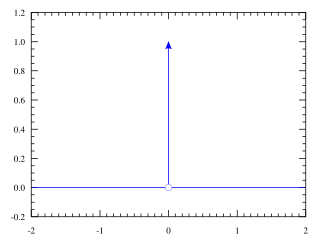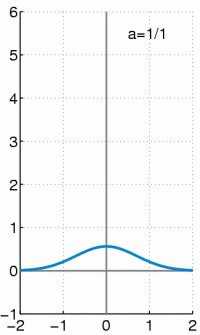Dirac delta function
pseudo-function δ such that an integral of δ(x-c)f(x) always takes the value of f(c)
The Dirac delta function, often written as , is a made-up concept by mathematician Paul Dirac. It is a really pointy and skinny function that pokes out a point along a wave. Loosely speaking, it has the value of zero everywhere except at , in such a way that the area between the function and the x-axis adds up to 1.[1] The delta function is often used in sampling theory, where its pointiness is useful for getting clean samples.


The integral of the Dirac delta function is the Heaviside function. The Dirac delta function can be seen as the derivative of the Heaviside function. [2]
Related pages change
References change
- ↑ "List of Calculus and Analysis Symbols". Math Vault. 2020-05-11. Retrieved 2020-10-06.
- ↑ Weisstein, Eric W. "Delta Function". mathworld.wolfram.com. Retrieved 2020-10-06.



